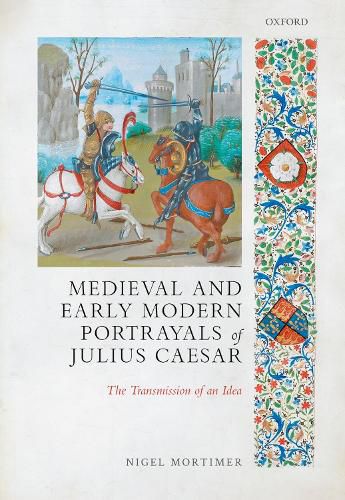Readings Newsletter
Become a Readings Member to make your shopping experience even easier.
Sign in or sign up for free!
You’re not far away from qualifying for FREE standard shipping within Australia
You’ve qualified for FREE standard shipping within Australia
The cart is loading…






Julius Caesar, ancient Rome’s most colourful leader, has been a subject of controversy for more than two thousand years. In the classical world he was celebrated as an inspired military commander, as a law-giver and orator possessed of outstanding drive and intellect. He was also denounced for his ambition, cruelty, concupiscence, and for his overthrow of a noble republic. Over the centuries almost every conceivable characteristic has been attributed to him. Throughout the medieval and early-modern periods Caesar was central to narratives of conquest and resistance, of kingship and subjecthood, of liberty and despotism. There was a time, however, when he was not the most storied figure from classical antiquity. The post-classical phenomenon of a chimerical and ambiguous Caesar is born in thirteenth-century France when the author of the Li Fet des Romains chose to complicate the influential view of a monstrous Caesar found in Lucan’s epic poem Bellum civile: this decision gave birth to the complex figure that has fascinated ever since. This book offers original translations of texts written between 1170 and 1574 in French, Latin, Italian, and Middle English, accompanied by commentaries which enable the reader to chart the evolution of the Caesar phenomenon throughout the medieval period right up to his first appearances on the early modern stage.
$9.00 standard shipping within Australia
FREE standard shipping within Australia for orders over $100.00
Express & International shipping calculated at checkout
Julius Caesar, ancient Rome’s most colourful leader, has been a subject of controversy for more than two thousand years. In the classical world he was celebrated as an inspired military commander, as a law-giver and orator possessed of outstanding drive and intellect. He was also denounced for his ambition, cruelty, concupiscence, and for his overthrow of a noble republic. Over the centuries almost every conceivable characteristic has been attributed to him. Throughout the medieval and early-modern periods Caesar was central to narratives of conquest and resistance, of kingship and subjecthood, of liberty and despotism. There was a time, however, when he was not the most storied figure from classical antiquity. The post-classical phenomenon of a chimerical and ambiguous Caesar is born in thirteenth-century France when the author of the Li Fet des Romains chose to complicate the influential view of a monstrous Caesar found in Lucan’s epic poem Bellum civile: this decision gave birth to the complex figure that has fascinated ever since. This book offers original translations of texts written between 1170 and 1574 in French, Latin, Italian, and Middle English, accompanied by commentaries which enable the reader to chart the evolution of the Caesar phenomenon throughout the medieval period right up to his first appearances on the early modern stage.